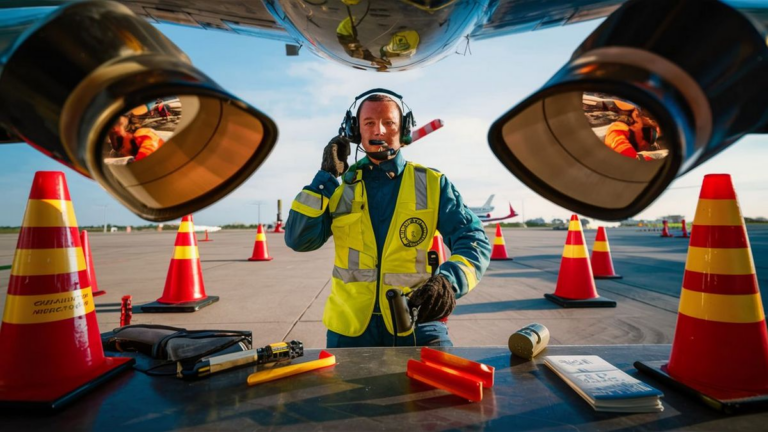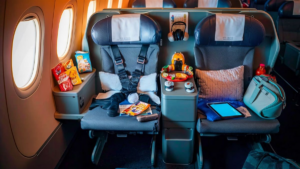If you’re interested in a career as an aircraft marshaller, you’ve chosen a role that requires precision, communication skills, and a keen eye for detail. As an aircraft marshaller, you’ll be responsible for guiding aircraft on the ground, ensuring safe and efficient movement around the airport. Here’s a comprehensive guide on how to become an aircraft marshaller.
Educational Requirements
While there are no strict educational requirements to become an aircraft marshaller, a high school diploma or equivalent is typically preferred by employers. Additionally, some employers may require completion of specific training programs related to aviation or ground operations.
Gain Relevant Experience
Prior experience in aviation or related fields can be beneficial when pursuing a career as an aircraft marshaller. Consider seeking opportunities such as internships or entry-level positions at airports, ground handling companies, or aviation service providers to gain valuable experience and insights into airport operations.
Develop Necessary Skills
Successful aircraft marshallers possess a range of skills essential for the role. These include:
- Excellent communication skills to effectively communicate with pilots and ground crew
- Strong spatial awareness and attention to detail
- Ability to work well under pressure and in fast-paced environments
- Knowledge of aviation regulations and safety protocols
- Physical fitness and agility to perform duties on the tarmac
Complete Training Programs
While on-the-job training is common for aircraft marshaller positions, completing specialized training programs can enhance your skills and employability. Look for courses or certifications offered by aviation authorities or accredited training providers that cover topics such as aircraft marshalling procedures, safety protocols, and radio communication.
Obtain Necessary Licenses and Certifications
Depending on the jurisdiction and employer requirements, you may need to obtain specific licenses or certifications to work as an aircraft marshaller. These could include airside safety certifications, radio operator licenses, or qualifications from aviation regulatory bodies.
Apply for Positions
Once you’ve acquired the necessary education, experience, and certifications, it’s time to start applying for aircraft marshaller positions. Check job boards, airport websites, and aviation companies for vacancies, and submit your resume highlighting your relevant skills and qualifications.
Prepare for Interviews
As part of the hiring process, you may be required to attend interviews or assessments to demonstrate your suitability for the role. Prepare by familiarizing yourself with common aircraft marshalling procedures, safety protocols, and industry regulations.
Continuously Improve and Stay Updated
Once you’ve secured a position as an aircraft marshaller, continue to enhance your skills and knowledge in the field. Stay updated on changes in aviation regulations, new technologies, and industry best practices through ongoing training and professional development opportunities.
Becoming an aircraft marshaller requires a combination of education, training, and practical experience. By following these steps and continuously striving for excellence, you can embark on a rewarding career guiding aircraft safely on the ground.
Work Environment
Working as an aircraft marshaller involves being exposed to various weather conditions and working in potentially noisy environments due to aircraft engines. It’s essential to be prepared for working outdoors in all types of weather and to use appropriate safety gear.
Team Collaboration
Collaboration with other ground crew members, such as baggage handlers and refueling technicians, is crucial for ensuring smooth aircraft operations. Developing teamwork skills and fostering effective communication within the ground crew is essential.
Physical Demands
Aircraft marshalling can be physically demanding, requiring individuals to stand for long periods, move swiftly on the tarmac, and sometimes lift equipment. Maintaining physical fitness through regular exercise and proper lifting techniques is important to prevent injuries.
| Skills | Description |
|---|---|
| Decision-making | Marshalling often involves making quick decisions, especially in high-pressure situations. |
| Adaptability | Ability to adapt to changing circumstances, such as weather conditions or aircraft delays. |
| Attention to Detail | Ensuring precise alignment of aircraft and adherence to safety protocols. |
Frequently Asked Questions
- Are there age restrictions for becoming an aircraft marshaller?
- What are the typical career advancement opportunities for aircraft marshalling?
- Is it common for aircraft marshallers to work night shifts or irregular hours?
See also:






